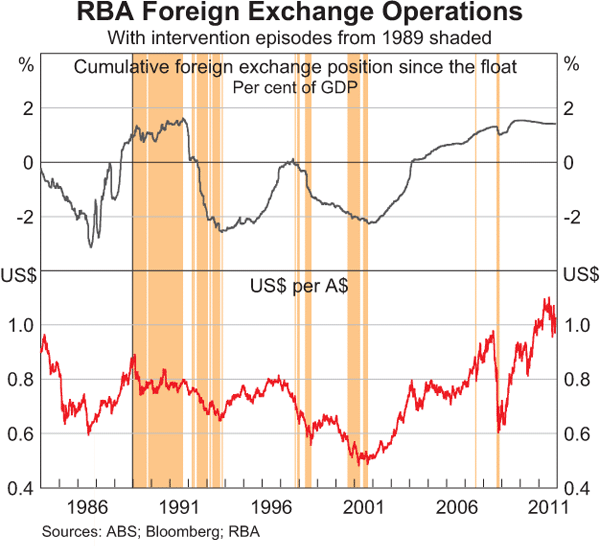
Introduction to the Exchange Rate
Economics (Year 12) - Exchange Rate
Christian Bien
Introduction to the Australian Dollar Exchange Rate | Reserve Bank of Australia
A brief overview of the role of the exchange rate and how the price is determined by the Reserve Bank of Australia.
What is the Exchange Rate?
The exchange rate is the price of one country's currency in terms of the price of another country's currency. In other words, it's how we price/value one currency in terms of another currency. For example $1 AUD = $0.78 USD
What affects the price of the Australian Dollar?
The free market determines the price of the Australian dollar. Buyers and sellers on currency markets determine the value of the Australian dollar. Put it simply, the value of the Australian dollar is determined by the supply of Australian dollars in the FOREX market and the demand of Australian dollars in the FOREX market. The Reserve Bank estimates that foreign exchange turnover is around $180 AUD billion a day, which positions Australia as the 8th largest currency market in the world. Some countries have a fixed exchange rate, where the exchange rate is fixed against another currency.
What are the types of floats?
Floats refer to the degree of government intervention in the free-moving movement of a currency in the FOREX market. There are three types:
Clean Float: No intervention by the Central Bank exists in the currency market
Dirty Float: Where the central bank sometimes intervenes in the currency market
Managed Float: Where the currency is managed by the Central Bank, for example, China has a managed float where the currency's position is valued low to ensure the international competitiveness of its exports
Why is the Australian Dollar a Dirty Float?

Image Source: Reserve Bank of Australia, Foreign Exchange Operations with Interventions Highlighted in Orange.
The Australian dollar is considered a dirty float - where a central bank can intervene in the foreign exchange market to influence the price of the dollar. While the majority of movements in the Australian dollar are determined by the free market, the Reserve Bank can and has intervened by using its foreign currency reserves to influence the price of the dollar by buying or selling the currency. In the above image, the orange highlights areas where the RBA has intervened in the market. Notice how these are often in periods of economic downturns, such as during a recession. The RBA may intervene in the market during these times to stimulate economic growth by depreciating the dollar to make it easier for overseas buyers to purchase Australian exports.
Why doesn't Australia have a fixed exchange rate?
We used to! Until 1983, the Australian dollar was fixed by the Reserve Bank. In 1983 the dollar was floated and determined mainly by market forces. While fixing the exchange rate to be lowly price against another currency sounds good in terms of the international competitiveness of exports, fixing the exchange rate requires substantial amounts of money in foreign currency reserves, in addition, central banks may need to raise cash rates to attract foreign portfolio investment flows which discourage economic activity.
Free-floating exchange rates also help to reduce fluctuations in the business cycle. During periods of high economic activity, a high exchange rate will discourage net exports by positioning exports as less internationally competitive and imports as more competitive. During periods of low economic activity, market forces will position a low exchange rate that will encourage net exports by positioning exports as more internationally competitive and imports as less competitive.
For example, during the mining boom, the Australian dollar reached a peak of around $1.10 USD, which help slow net exports and economic activity, while during the GFC the Australian dollar reached a trough of around $0.62 USD to encourage net exports and economic activity.